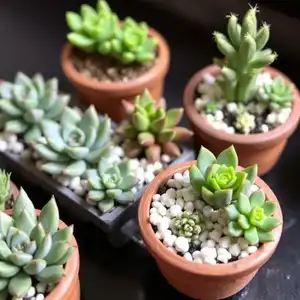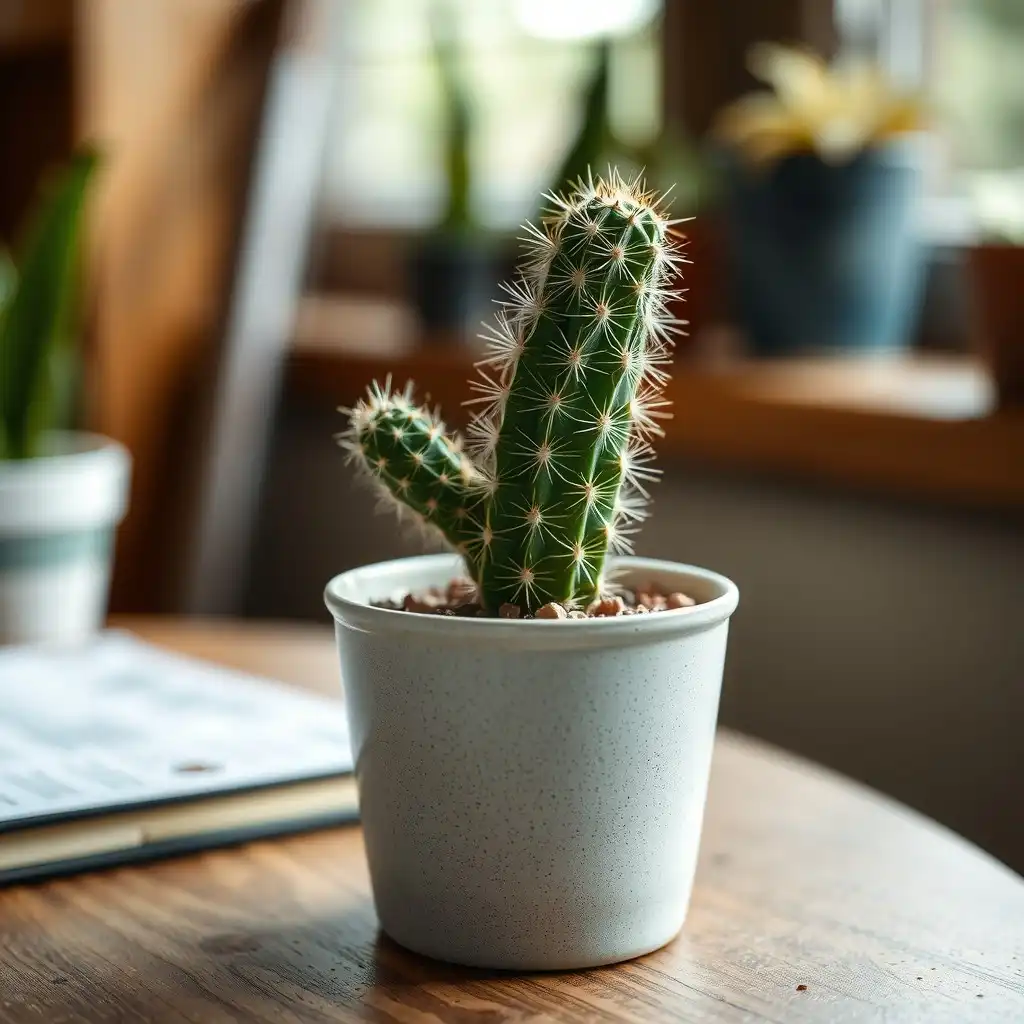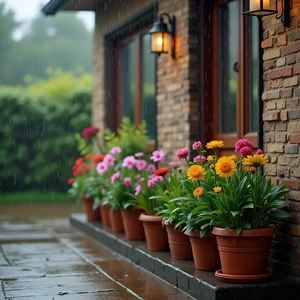
Small succulents and cacti are perhaps the perfect companions for any table. The thing is, they’re beautiful, hardy, and surprisingly unpretentious – so much that they don’t need frequent watering, just an occasional drink. And some species even tolerate low-light conditions, though they do need some sunlight, sure do.
But even so, both still need to be looked after properly. And many also wonder which exact plant to choose and which indoor tabletop planter will work the best.
Keep reading, and we’ll explain everything in the most simple way possible.
What’s the Difference Between Succulents and Cacti?
People often think Cacti and Succulents are the same: they both store water, have fleshy leaves or stems, and handle drought well.
However, botanically speaking, there’s a clear difference.
Succulents aren’t a single plant family, yet a diverse group that stores moisture. Their leaves are usually thick, sometimes waxy or hairy – again, to reduce water loss. They may come in many forms, like aloes, echeverias, or even some euphorbias, which can look very different from one another.
Cacti, on the other hand, all belong to the Cactus (Cactaceae) family. Their features are small, fluffy bumps where spines grow. These ‘spines’ are actually modified leaves that help conserve water, deter animals, and even regulate temperature.
And while most Cacti are prickly, some have few or no spines.
And confusingly, some succulents (like certain Euphorbias) can be spiky too!
To tell them apart, check for areoles: if you spot them, it’s a cactus. Flowers and fruits can also help, but not all plants bloom regularly. As a rule of thumb, if it’s fleshy and spiky, it’s likely a cactus; if it’s thorn-free, it’s probably a succulent.
Then again, nature loves exceptions.
Which Succulent to Pick
Among the small varieties, Haworthia stands out with its striped leaves. While Echeveria, for instance, offers a somewhat more delicate pastel shade. Then, there’s Lithops, which look like living stones: an exotic touch that fits perfectly into a tech-inspired theme.
And if you’d prefer something with a bit of movement, consider the String-of-Pearls (Curio rowleyanus, that is) with its trailing, bead-like shoots.
And Which Cacti to Pick
As for Cacti, Mammillaria is a great option. It’s compact and occasionally blooms. Truth be told, it’s one of the most common choices, yet if you’d like something more vibrant, Rebutia is a fantastic alternative. It will definitely surprise you with its bright flowers despite the tiny size.
Another standout is Parodia, perfectly round with a charmingly pretty tip. And let’s not forget Opuntia microdasys, also known as ‘bunny ears’ – adorable and a classic choice overall, suitable for almost any setting and place.

How to Choose the Perfect Planter
Now, a few words about care and the perfect planter.
First, it’s worth considering the material: ceramic offers good air circulation, while, for example, concrete looks stylish, but must have proper drainage.
And since Succulents and Cacti have shallow roots, opt for low containers – this keeps the plants comfortable and ensures a balanced, harmonious look.
Generally, caring for both is straightforward.
In most cases, they thrive in bright but indirect light, making a spot near a window ideal. That means they’ll do well on almost any table. As for the rest, water only when the soil is completely dry, using well-draining cactus soil. Lastly, avoid overwatering, draughts, and dark corners, and the greeny lads will stay happy for years to come.







